Soil is a Habitat in its Own Right: Eight Things We Learnt at the Devon Local Nature Recovery Strategy Conference

Introduction
I was delighted to be invited by Sarah Jennings of Devon County Council to the Devon Local Nature Partnership’s Conference on 25th March, where a key aim for the day was to set out and discuss Devon’s emerging Local Nature Recovery Strategy (LNRS). The conference was introduced by Marian Spain, Chief Executive of Natural England, who gave a brilliant overview of the role of LNRS in delivering national biodiversity targets and joining up efforts across the country to a packed auditorium of the experts and practitioners who will be responsible for implementation on the ground. She explained that LNRSs are based on a collaborative and strategic approach to nature recovery led by Local Authorities under the direction of Natural England. Central to LNRS is the need to not only prevent species extinction but to ensure abundance, by making nature conservation efforts more effective, integrated, and strategic.
The Devon Strategy is led with extraordinary focus and energy by Sarah Jennings, who explained all we need to know about the initiative more broadly (Annex 1). At the heart of it is a mapping process which identifies high opportunity areas where conservation actions should be prioritised. These areas are divided into five categories:
- Managing Existing Habitats: Using the best available data, including watercourses and hedges, to enhance connectivity.
- Protecting and Expanding Habitats: A proposed 100-metre buffer around priority habitats to shield them from urban and agricultural impacts, expand them or create other habitats.
- Creating new habitats (focus Landscapes): Specific areas identified for habitat creation, using soil, landscape character data, species etc.
- Species-Specific Strategies: Mapping areas where species conservation efforts should be targeted.
- Avoiding “White Space”: Ensuring all areas are considered for conservation efforts, not just the prioritised ‘High Opportunity Areas’.
Sarah and her team’s goal is to produce a clear, practical mapping tool, linked to a website with details on actions (and why the actions are needed) that helps farmers, land managers, policymakers, funders, conservationists, and communities make informed decisions. This tool will be interactive, allowing users to click anywhere on the map to see what they can do for wildlife in that area.
To my delight, we learned that under Sarah’s leadership Devon’s strategy will put soil at its heart, using soil maps, data and knowledge to underpin habitat recovery and also a bespoke plan for soil habitats. This has been designed by Dr Richard Smith, a Devon-based soil scientist and practitioner who works for the Environment Agency. Though it is currently unique across the country, it would be fascinating to see Richard’s approach built out to other region’s strategies. Here are eight key things we learnt from Richard’s presentation.
- Soil is a habitat in its own right
Healthy soils both underpin every aspect of landscape and habitat recovery and are fundamental ecological habitats in their own right. Soil is a unique habitat and is full of life that underpins all terrestrial ecosystems. A quarter of all known species live in the soil where they are invisible and unnoticed to most people. While soil is often discussed in relation to ecosystem services such as water management, its function as a habitat and symbiosis with overlying habitats remains overlooked. To that end, Richard has helping to design a central place for it in the Devon LNRS.
- Soil structure and soil carbon are central to the soil habitat
Biological activity in the soil is fundamental in forming soil structure. This is where clumps of soil particles are held together by chemical, physical and biological processes creating the soil habitat. Aggregation of soil forms living space and controls the balance of air and water available for organisms.
The soil habitat is a large carbon store and the science about soil carbon is evolving rapidly. Traditional thinking regarded humus as organic matter that could not be broken down, thus accumulating slowly over time. However, modern science has shifted this perspective, suggesting that all organic matter can be decomposed but becomes inaccessible because it is protected either by wetness, coldness and acidity or due to physical protection within soil aggregates.
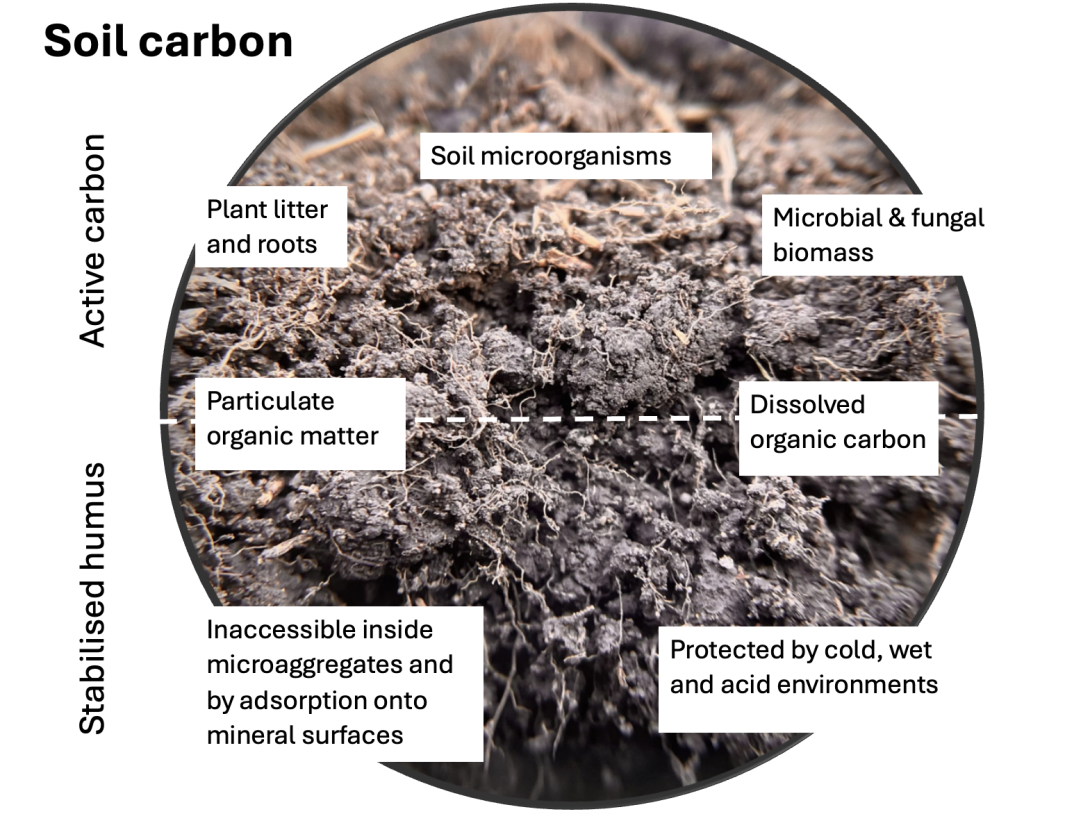
3. Understanding different soil layers or horizons as well as topsoil is critical
There is a common tendency to focus solely on topsoil (also known as the A horizon). Deeper soil layers however significantly influence surface conditions. Water movement, acidity, and nutrient availability are all governed by these deeper layers due to their inherent texture, porosity and the type of bedrock, which in turn determine the types of plants and habitats that can thrive.
Focussing on topsoil and not considering the deeper layers and varying soil types is akin to discussing birds without considering their individual species and ecological requirements. By failing to acknowledge soil diversity, conservation and restoration efforts risk oversimplification – and ultimately failure.
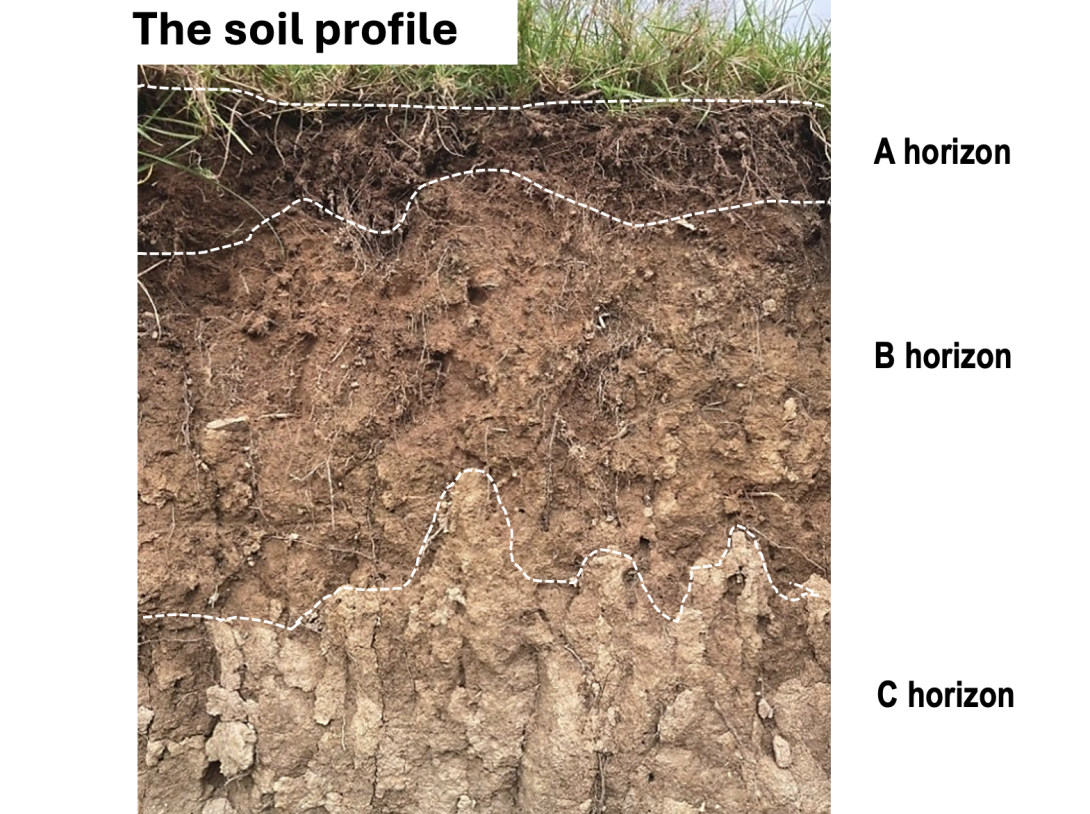
4. Different soil types play different critical roles in habitat recovery
Richard introduced the Devon LNRS alongside the Devon soil map. He explained that the Soilscapes map published by Cranfield University is based on the National Soils Map and can be used to categorise soils based on their ecological potential and characteristics for habitat recovery. Richard identified four broad soil types found in Devon which are critical to nature recovery in this region:
- Brown Earths: These soils are freely draining and very common in Devon, typically associated with woodland habitats and slightly acidic grasslands. Calcareous brown earths also occur over chalk and limestone in Devon.
- Gley Soils: These have naturally poor drainage and so support wet woodlands and other wetland habitats with seasonally waterlogged soils. These are common in North Devon with purple moor grass and rush pastures.
- Podzolic Soils: These are found in areas like the Pebble Bed Heaths and Dartmoor. They are acidic soils and support heathland ecosystems.
- Peat Soils: These are found on moors such as the Dartmoor blanket bog. They are permanently wet soils that support unique ecological communities.
Other broad soil groups being considered with different habitats are the shallow soils and man-made soils.
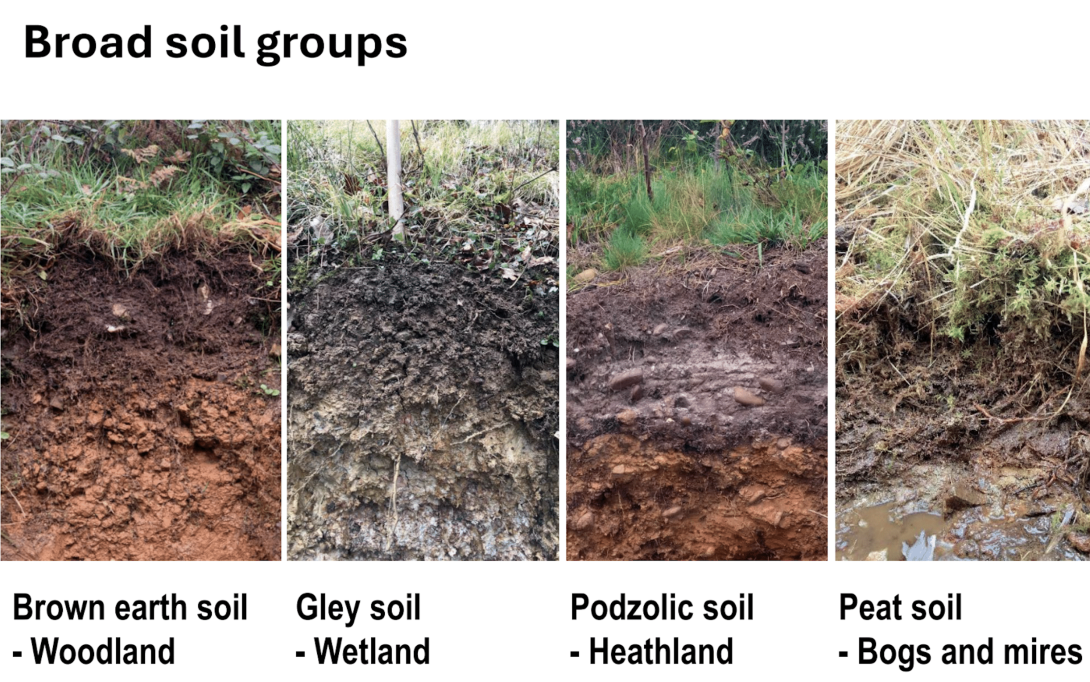
5. Soil compaction is rife not only on agricultural soils but also in semi-natural habitats
One of the key issues Richard addressed was the widespread problem of soil compaction and poor soil structure in Devon across all habitats. Dealing with soil compaction is central to strategy for improving soil and habitats. He noted widespread legacy compaction on Dartmoor, particularly on podzolic soils. This not only causes unnatural runoff, but also could be limiting the potential for recovery of heathland habitats and accumulation of carbon. He attributed this to mainly to historical management, particularly winter grazing, people and vehicles squeezing wet soil, and typically with very slow recovery of these acid soils.
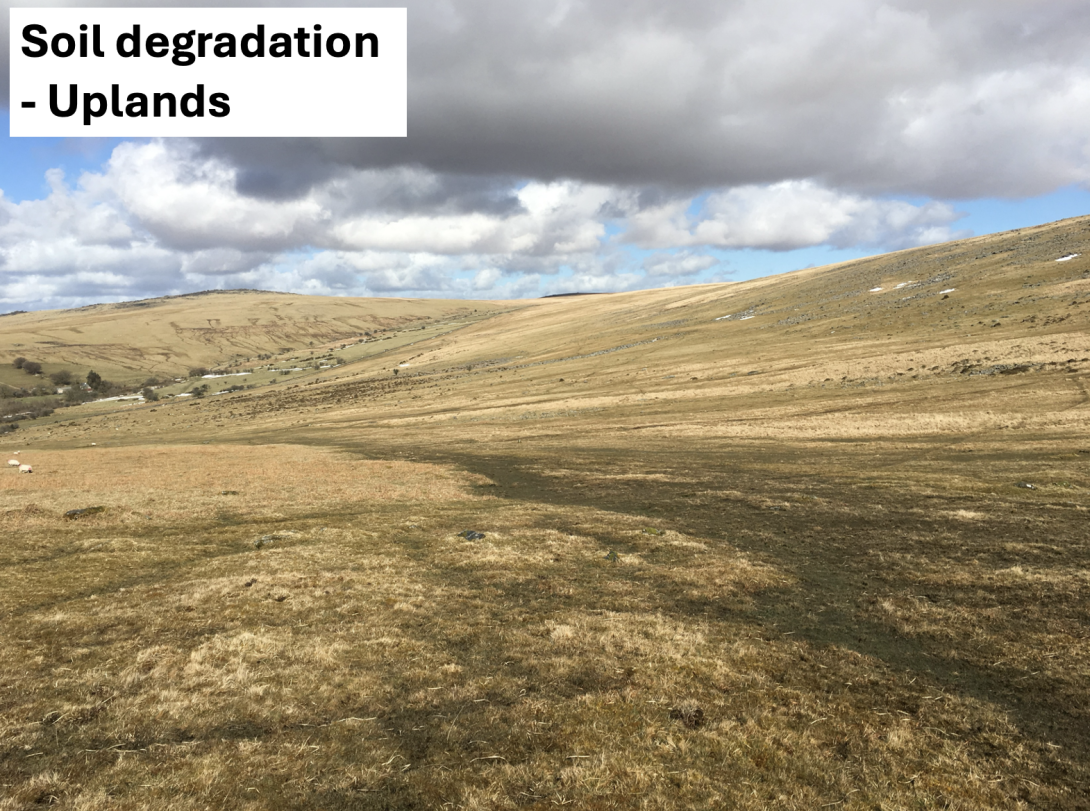
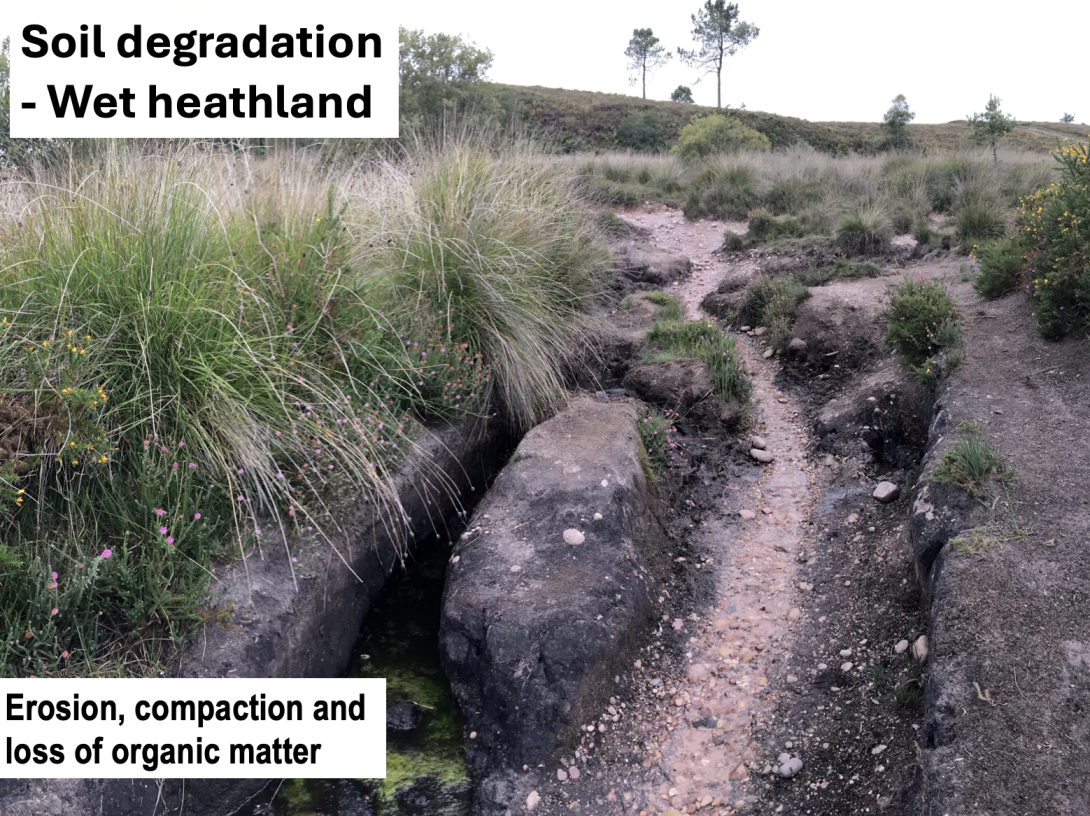
In a striking example we saw a side-by-side comparison of soil inside and outside a fenced area. Within the fenced area, where grazing was excluded, the soil had recovered dramatically, becoming more porous, biologically active and in turn supporting wider habitat recovery. While reducing grazing pressure can aid recovery, in some cases, complete exclusion including people pressure is necessary for the soil to fully regenerate and for it to support nature recovery for that local area.
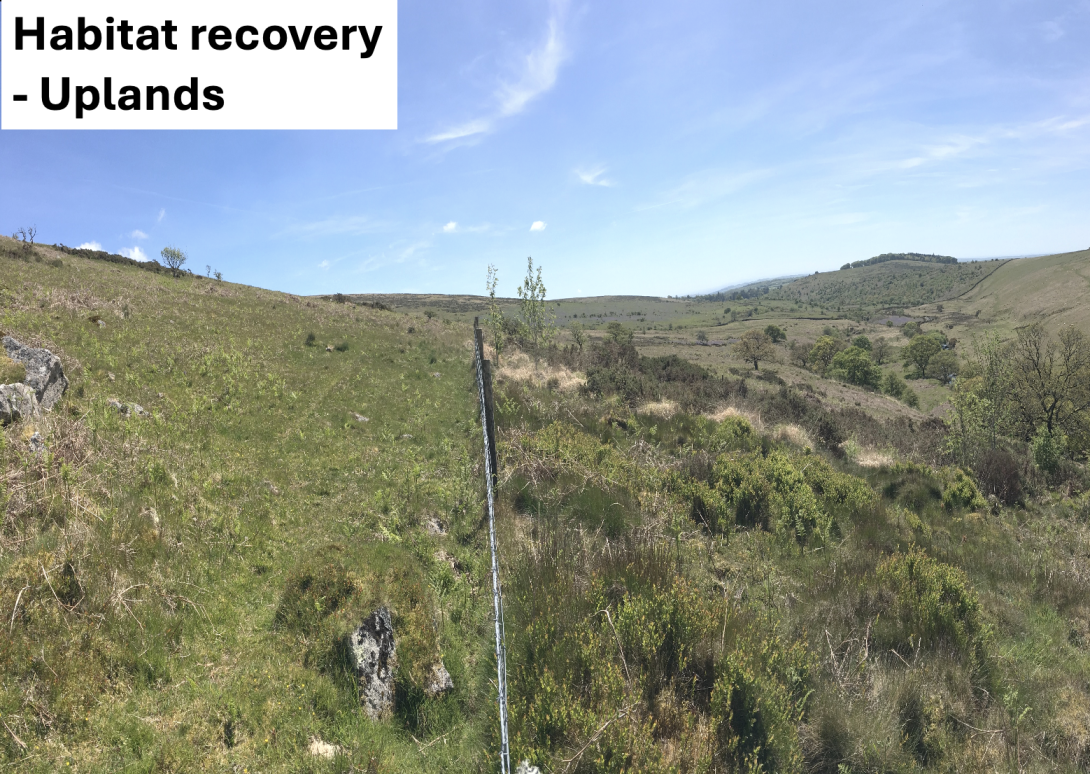
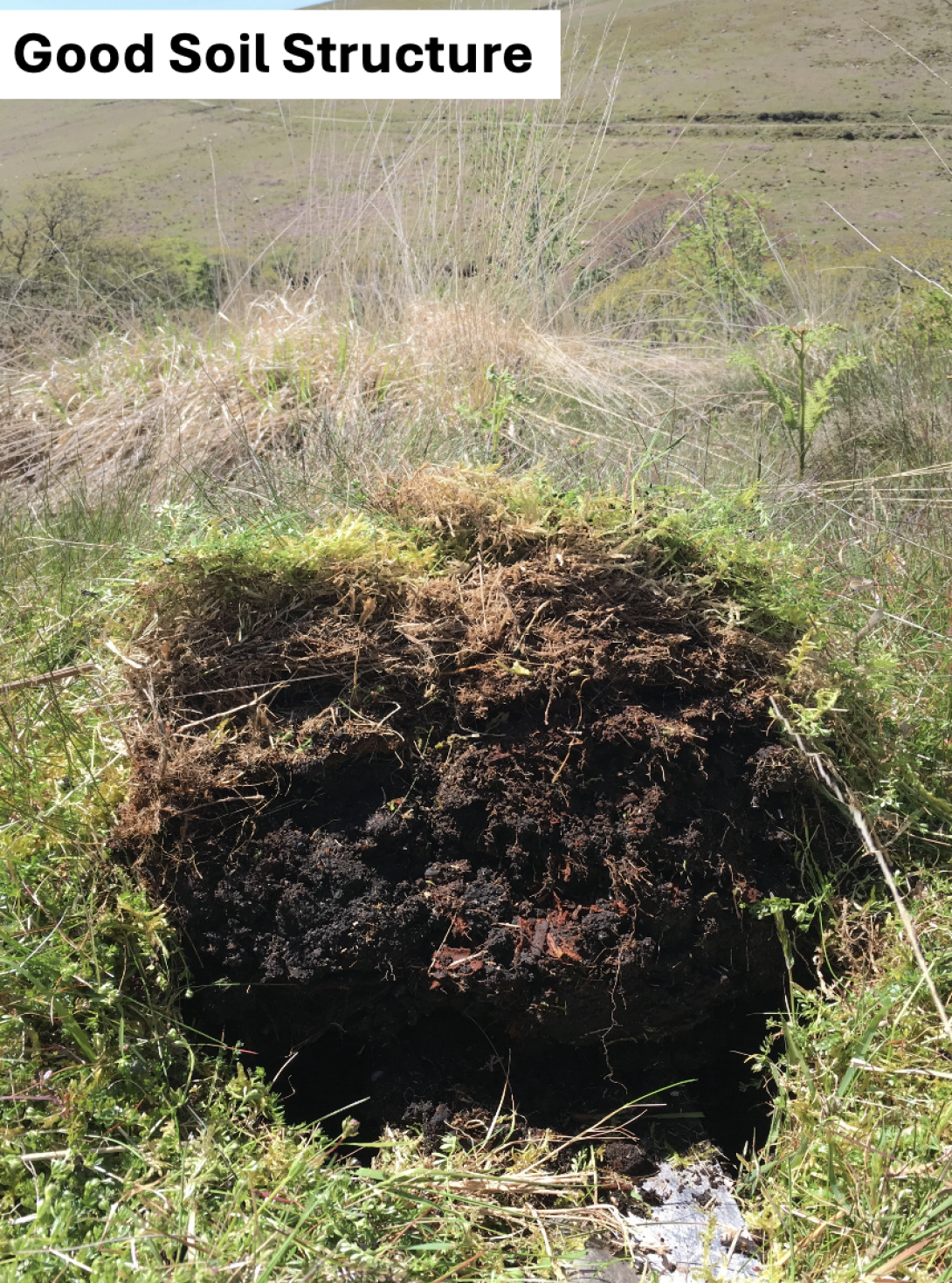
6. Nature recovery practices can harm soil habitats, or even destroy ancient soils
Richard highlighted an example from the East Devon Pebble Bed Heaths, a Special Area of Conservation (SAC), where soils are severely degraded in some areas due to the pressure of people. He also mentioned that conservation practices may unwittingly ignore the value of rare fragile soils. An example of this that has been drawn to our attention at the SSA is the deliberate removal of ancient topsoil on podzols to create habitat for specific species like the silver-studded blue butterfly and insects. Through a soils lens, this is akin to cutting down an ancient tree – once these ancient soils are lost, they cannot be regenerated within a human lifespan or even potentially over centuries.
Similarly, an area that needs addressing is the management of naturally wet soils in semi-natural habitats when the very management may cause soil compaction, and how to prevent and deal with it when works are carried out. Richard offered the perspective that this is an area where more discussion is needed to find a compromise and working together so that outcomes that may seem to be in competition with each other become complementary.
7. Land management practices have unique impacts on soil health
Richard discussed specific impacts on soil health of different land management techniques and practice:
- Tree Planting: The are multiple benefits of tree planting but the process must consider soil conditions. Allowing natural regeneration often yields better results, as this enables pioneering vigorous plant roots that can naturally break up compacted soil over time. When planting trees, it is critical that the soil itself is first in good health – and not damaged in the planting process itself. There are too many examples of trees planted that do not survive.
- Lime Application: liming can help recover some degraded agricultural soils improving soil structure, including enclosed farmland near Dartmoor. However, it may not be suitable for recovery of naturally acidic grasslands.
- Subsoiling: While useful to remedy compaction deep in the soil on agricultural land, subsoiling must be done with an understanding of the soil type. Some soils naturally restructure through cracking, while others require periodic intervention.
- Direct Drilling: Direct drilling of crops and no tillage is frequently promoted as a soil conservation technique to grow soil carbon and soil health. However, it can in fact cause or exacerbate soil compaction problems if not managed and applied with sensitivity. This is a common problem in Devon on sandy soils that readily pack down, thus reducing soil porosity. The Environment Agency deal with many runoff problems in Devon associated with shallow tillage and poor soil structure.
8. Soil maps and data are critical to overcoming barriers to healthy soils
The group discussion following Richard’s presentation highlighted that improving soil management is challenging due to economic barriers and policy constraints. Though farmers have the advantage over policy makers of direct experience about soil conditions, there is a continuing lack of awareness and skills which is a key barrier to better soil management across all habitats.
Richard’s contribution to Devon’s LNRS makes great use of the existing open access Soilscapes data and it was fascinating to see these applied and the broad soil groups occur in Devon (see maps below). However, I noted the project illustrates both the recurring opportunities and barriers faced by soils through the lack of publicly accessible soil data and associated soil maps – and guidance on their interpretation. The National Soil Map, though created by public funds, has for decades been costly and cumbersome to access because licences are required. We at the SSA are watching keenly to see whether efforts to make this data freely available will succeed, allowing land managers and their advisers to make more informed decisions with soil at their heart, and Devon’s LNRS is a great example of the innovative and practical approaches freely available national soil data and maps would unlock.
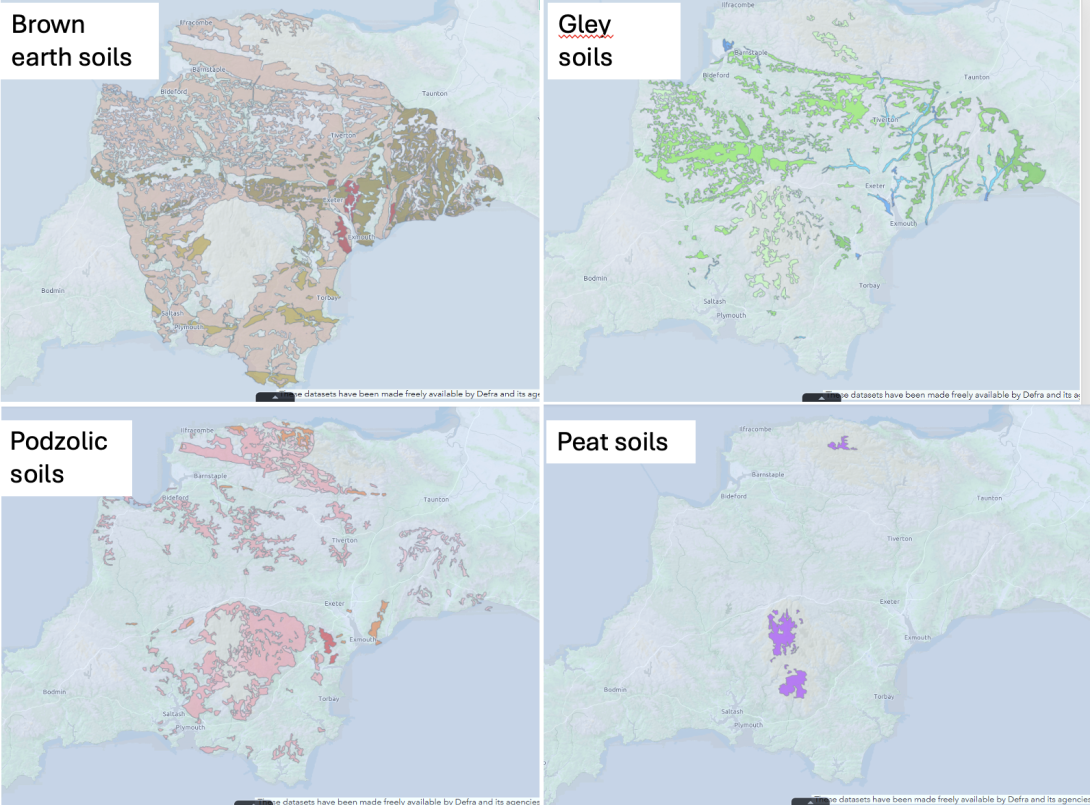
Conclusions and summary
Richard concluded with the promising message, that soil recovery is possible but requires time, patience, awareness, expertise and proper management. Soils recover by natural biological processes, build-up of soil carbon and also by good husbandry involving management to prevent compaction and soil loosening where needed. He shared an example of a field that had recovered significantly over 20 years after being taken out of maize production, subsoiling and then converted to permanent pasture. Understanding and raising awareness of soil diversity is crucial—there is no one-size-fits-all solution, and different soils require tailored management approaches.
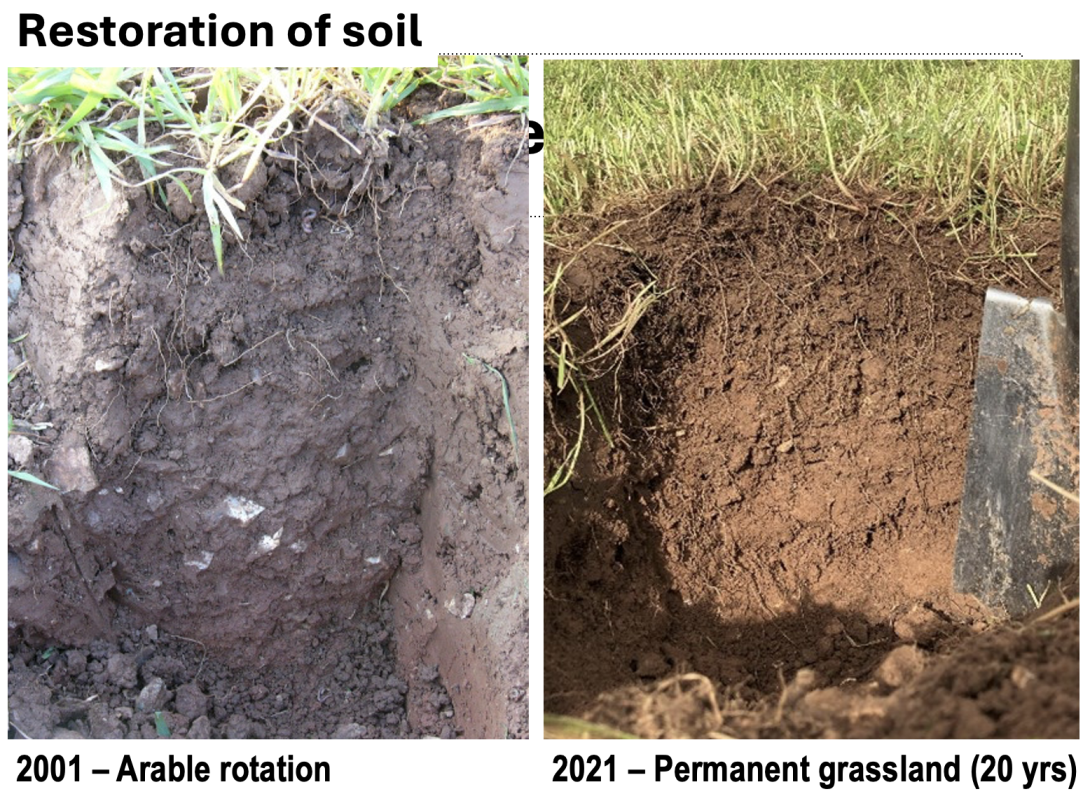
My overarching takeaway from this inspiring presentation was clear: soil is an overlooked but a vital habitat in its own right – and all other habitats are dependent upon it being in good health. Whether restoring woodlands, wetlands, or heathlands, understanding both soil type and soil condition is fundamental to successful landscape and nature recovery. If you’re reading this with an interest or role in nature recovery, what are the dominant soil types in your area? What aspects of nature restoration are they best suited to? What condition are they in? How are they being managed? Where do they lie across the land? LNRSs around the country – as well as land managers, conservationists and policy makers – might to look to Devon’s leadership in putting soil knowledge and soil health at the heart of their strategy and adopting evidence-based management practices.
Key takeaways:
- The soil tends to be an overlooked habitat in its own right and in supporting overlying habitats
- Soil habitats are diverse
- Soil habitats are degraded in all land uses, including ‘semi natural habitats’
- Soil compaction is a problem in Devon
- More awareness is needed about soil type and how to diagnose the state of soils
- There is a huge opportunity to restore soils
- Restoring soils will enable much better and faster nature restoration
All images in this blog are courtesy of Dr Richard Smith

Ellen Fay
Soil Health and Carbon Dynamics
Click here to access the PDF version of the blog
Subscribe to our Newsletter
A quarterly update of all LUNZ Hub activities, events and news stories.
